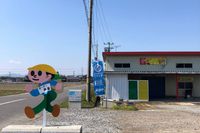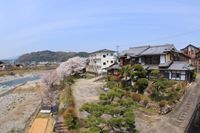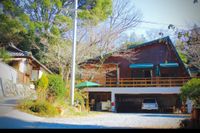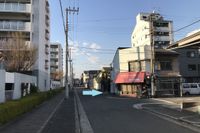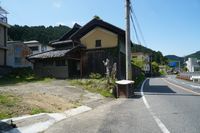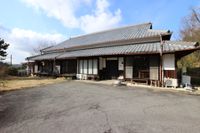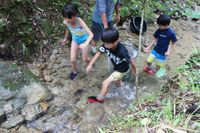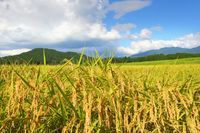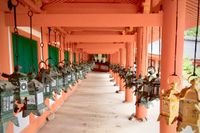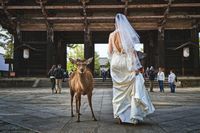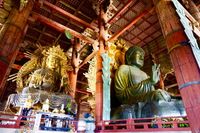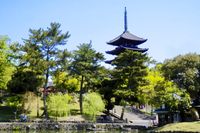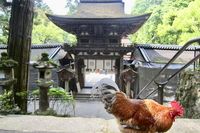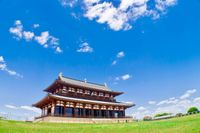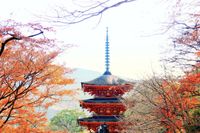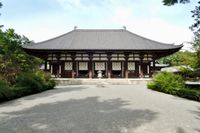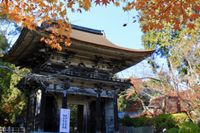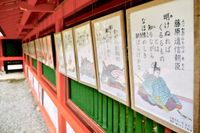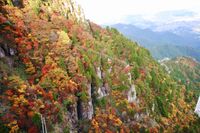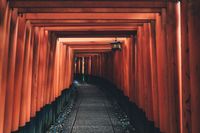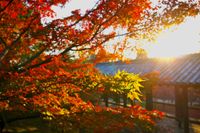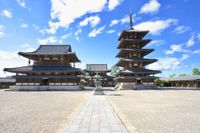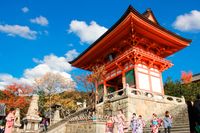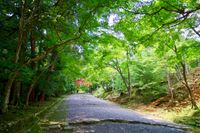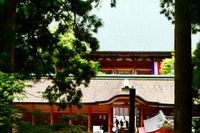Iga Ueno Castle
三重県/伊賀市

Description
This is a castle that was built in 1585 under the order of Tsutsui Sadatsugu. During the Sengoku era(1467-1600), it was the main base for the Iga Ninjas, and is also known as "Hakuho castle" due to its white and elegant appearance. Underground there is an Iga Ninja museum where visitors can experience the true world of Ninjas.
Homepage
Address
Nearby Car Night Spots
Shin Meishin Suzuka PA (inbound) RV Station Suzuka * With Power!
¥2,200〜
/ per nightMie Yamamotocho, Suzuka-shi
4.3
(156)(Bonfire BBQ) Chita Mihama Noma Beach Station
¥3,500〜
/ per nightAichi Noma, Mihamacho, Chita County
4.7
(42)Nearby Activities
Catch and eat char in a beautiful valley in the mountains
¥2,000〜
/ per personShiga Fujise, Taga-cho Inukami-gun
3.0
(0)All you can eat rice balls and rice reaping in the rice field in the mountains
¥2,000〜
/ per personShiga Fujise, Taga-cho Inukami-gun
3.0
(0)Ranking Stations
(Bonfire BBQ) Chita Mihama Noma Beach Station
¥3,500〜
/ per nightAichi Noma, Mihamacho, Chita County
4.7
(42)Vanlife BASE | 45 min. from Narita Airport / Perfect for campervan travel/A seaside town rich in nature/Japanese countryside town/welcome traveler
¥7,000〜
/ per nightChiba Koseki, Kujukuri-machi, Sambu-gun
5.0
(61)Shin Meishin Suzuka PA (inbound) RV Station Suzuka * With Power!
¥2,200〜
/ per nightMie Yamamotocho, Suzuka-shi
4.3
(156)Nearby Drive Spots
Koga Ninja Village
This is a Koga Style Ninja Theme park that opened in 1983. Within the park, there is a Koga Ninja museum which houses the largest number of Ninja tools and exhibits in the world, as well as the original residence of the famous Ninja known as Fujibayashi Yasutake, which was deconstructed and rebuilt as a Ninja trick house. There are other sporting Ninja experiences available such as Shuriken sword fighting and "Mizugumo" - crossing rivers on small raft like objects.
Kasuga Taisha Shrine
This is a shrine that was built in 768 AD to enshrine the Kasuga gods Nakatomi clan and Fujiwara clan. The Kasuga Gods are known as Takemi Kazuchi no Mikoto(Kashima Jingu Shrine), Futsunushi no Kami(Katori Jingu Shrine), Amenokoyane no Mikoto and Himegami(Hiraoka Shrine). It is the head temple of the Kasuga shrine group, of which there are around 1000 in Japan, and it is said that deer are the underlings to the shrine Gods, from the legend that Takemi Kazuchi no Mikoto rode here on a white deer. It is registered as a World Heritage Site.
Nara Park
Registered as a World Heritage Site, this is a famous deer park. Around 1,200 wild deer inhabit the area, and is popular for feeding the deer with "Deer senbei" (a type of savoury biscuit). The deer is said to be a god of Kasuga Taisha Shrine, which is in the local area, and Takemikazuchi is said to have come to the area from Kashima Jingu Shrine in Ibaraki riding on a deer when the shrine was built.
Todaiji Temple
This temple was built in 741 AD under the instruction of Emperor Shomu, and is a branch temple of the Kegon sect head temple. The temple's buddha statue known as the "Daibutsu of Nara" was built, and became a place of hope and support from Emperor Shomu, during famine, earthquakes and illness of the time. There are many items of cultural importance such as the largest wooden buddhist temple in the world, and is registered as a national heritage site.
Kofukuji Temple
This is a temple built in 669 AD by Fujiwara Fuhito, amongst others, and is a branch temple of the Hoso sect main temple. The main object of worship is known as Shaka Nyorai, and is registered as a national treasure. It was considered as one of the four great temples during the Nara period(710-794) and one of the seven major temples during the Heian period(794-1185), and increased in prominence through sharing teachings with Kasuga Taisha Shrine. There are numerous cultural treasures such as the wooden deva king statue.
Isonokami Jingu Shrine
This is a shrine that was built in 570 AD. It is one of Japan's oldest shrines, housing the great God Futsunomitama no Okami, and was the main temple of the ruler of military family, known as Mononobe clan. Even amongst old faiths, it was known as a particularly distinguished shrine. There are around 40 chickens in the area which are said to be underlings to the shrine gods. If you hear the chickens crying out, it is said to bring good fortune.
Heijo Palace
A town built by Empress Genmei in 710 AD, it is a registered world heritage site. The town was created as a capital to practice the law of the land and was 2,500 hectares in size. The model of the city was based on China's city of Choan City. The Suzaku gate and imperial council hall have been restored, allowing visitors to feel the history of the original town.
Byodoin Temple
This is a temple built in 1052 by Fujiwara Yorimichi and is registered as a World Heritage Site. The main object of worship is known as Amida Nyorai, and displays the luxurious aristocratic culture of Fujiwara clan. In the central island of the pond, there is what is known as the phoenix temple, and it appears as if there is a palace floating in the middle of the pond in a treasure paradise. You can see the phoenix design on 10 yen coins and 10,000 yen notes.
Hasedera Temple
This is a temple built by Domyo in 727 AD, and is the branch temple of the Shingon Buzan sect main temple. The object of faith is known as Juichimen Kannnon(11-faced) and is the head temple of the Hasedeta temple group, of which there are around 240 in Japan. As one of Japan's most prominent Kannon sacred sites in Japan, it attracted the faith and reverence of many aristocrats and nobles. Situated in the middle of Mount Hatsuse, in April and March, around 7000 Moutan Peony flowers of 150 varieties bloom in the area, which had led the temple to be also known as the "Flower temple".長谷寺 © w_0705_ クリエイティブコモンズライセンス(表示4.0 国際)https://creativecommons.org/licenses/by/4.0/
Toshodaiji Temple
This temple, which was a branch of the main temple of the Rishu sect, was built in 759 AD by Jianzhen (known as Ganjin in Japanese), a Chinese monk who singlehandedly spread the teachings of Buddhism in Japan. The main object of worship is known as Rushana buddha and is registered as a World Heritage Site. The temple is significant in that is preserves the original 8th century Nara Tenpyou culture, and has the golden hall and auditorium that was constructed during the Nara era(710-794). The name comes from the fact that Jianzhen spent his later years at the temple.
Daigoji Temple
This is a Shingon sect temple built by Shobo in 874 AD, and is a branch temple of Shingon sect head temple. Yakushi Nyorai is the primary object of worship, and the temple is registered as a World Heritage Site. Although it was destroyed during the unrest of the Muromachi Era(1336-1573), it was reconstructed as the stage of a famous play starring the hero Toyotomi Hideyoshi, known as the "Daigo no Hanami". It is also famous for cherry blossom viewing.
Nagarasan Onjoji Temple
This is a temple that was built in the 7th century under the instruction of Prince Yota. It is the head temple of the Tendai-jimon sect. From ancient times, battles and conflicts were waged with Hiei mountain Enryakuji Temple, and was confiscated by Toyotomi Hideyoshi. It is known as the "Phoenix Temple" due to overcoming numerous hardships and being rebuilt each time. Starting with the main hall, the temple contains 10 national treasures and 42 items of designated cultural importance.
Omi Jingu Shrine
This is a shrine built in 1940 to commemorate the 2600th year of the Emperor Jinmu, who was crowned in 660 BC. The temple God is known as Emperor Tenji, who made the trip from Asuka to Omi in 667 AD. After the Emperor Tenji wrote the Ogura Anthology of One Hundred Tanka‐poems by One Hundred Poets, it became a venue for playing Karuta (a variety of card games, normally played around new years). It is also the setting for the anime "Chihayafuru", and many fans of the anime make the pilgrimage here.
Mount Gozaisho
This is a mountain 1,212 meters in height, on the border between Mie and Shiga prefectures. In Spring there are the azalea and spring blossoms, summer brings the red dragonflies, autumn has its red, orange and yellow leaves, and winter brings frost covered trees. Tounaiheki is a famous rock climbing area in this mountain, and hiking can be enjoyed here during any of the four seasons. ※御在所岳 紅葉 © 菰野町 クリエイティブコモンズライセンス(表示4.0 国際)https://creativecommons.org/licenses/by/4.0/
Fushimi Inari Taisha Shrine
Built in 711 AD, this shrine is the main central temple of the Inari Shrine group, of which there are about 30,000 in Japan. The main Gods are Ukanomitama no Mikoto , Satahiko no Okami, Omiyanome no Okami, Tanaka no Okami, Shi no Okami, known as the Inari great Gods. The shrine has long been known as a place to pray for wish for abundance, and the countless red/orange Torii gates were built to express the power of abundance of the Inari great shrine God, and is known as the "Thousand Torii gates". It was also the scene for the film "Memoirs of a Geisha".
Tofukuji Temple
This is a Rinzai sect temple built in 1236 by Enni, and is a branch temple of Rinzai Tofukuji sect head temple. The main object of worship is Shaka Nyorai, and the name takes one character from the Todaiji Temple and Kofukuji Temples respectively. The oldest gate in Japan is here, which was rebuilt by Ashikaga Yoshimochi in 1425, and is a designated national treasure. In addition from the Tsuten bridge, provides optimum views of the vivid autumn leaves, and is said to be the best autumn leaf viewing spot in Kyoto.
Horyuji Temple
This is a temple built in 607 AD by Prince Shotoku, and is a branch temple of the Shotoku sect head temple. It is registered as a world heritage. The object of worship is known as Shaka Nyorai and during the Sengoku era(1467-1600), was restored by the Toyotomi clan and Tokugawa families, as well as significant restoration between 1934 and 1985. Over a long period of time, it has been restored to its former glory. It is a treasure trove of cultural assets with 17 national treasures and 35 assets of cultural importance.
Kiyomizu-dera Temple
This is a Hosso sect temple built by Enchin in 778 AD. The temple is built is reverence to Senju Kannon(1000 Armed) and is registered as a World Heritage Site. There is also a 13 meter high famous hall known as the "Kiyomizu Stage", which was built under the instruction of Tokugawa Iemitsu, where it became the stage for performances such as Gagaku classical music, Noh theatre, Kyogen and Kabuki. The temple can be enjoyed in all four seasons with cherry blossoms, greenery, autumn leaves and snow views during the respective four seasons.
Hiyoshi Taisha Shrine
This is a shrine built in 91 BC. The western hall contains the main powerful God with the eastern hall contains the Mount Hiei guardian God. This is the main hub shrine of the 3,800 Hiyoshi, Hie and Sannno Shrines in Japan. There are numerous cultural items associated with monkeys, as they are considered as underlings to the shrine Gods. The area is also famous for autumn leaf viewing with around 3000 autumn leaf trees.
Mount Hiei Enryakuji Temple
This is a temple of Tendai that was founded by Saicho in 788 AD. It is also registered as a World Heritage Site. Along with Mount Koya Kongobuji Temple, it became the centre for Heian Buddhism and a place of training for figures such as Honen (founder of the Jodo sect), Shinran (founder of the Jodoshin sect), Eisai(Founder of the Rinzai sect), Dogen (founder of the Soto Sect), Nichiren (Founder of Nichiren Sect). Because of this it is also known as the "Mother Mountain of Japanese Buddhism" and sacred buddhist teachings still continue to this day.

